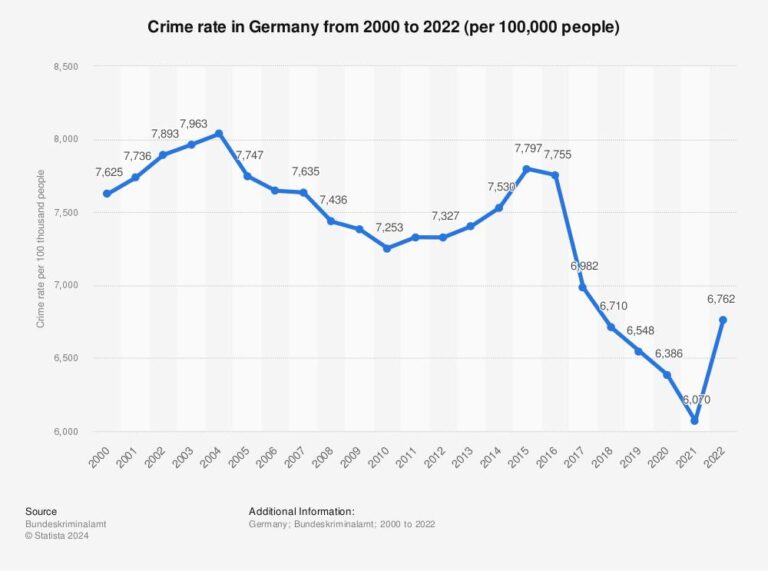Decoding the Shift in Crime Dynamics During 2020
The year 2020 brought about a seismic shift in American life, profoundly altering crime trends nationwide.As lockdowns confined millions to their homes, traditional crime patterns were disrupted in unexpected ways. While some cities witnessed a surge in violent offenses, others saw a decline, reflecting a complex interplay of social isolation, economic hardship, and evolving law enforcement priorities.
Key observations from this turbulent year include:
- Increase in domestic abuse incidents: Prolonged confinement with abusers led to a notable rise in reported cases.
- Decline in property-related crimes: With more people staying home, opportunities for burglaries and theft diminished.
- Spike in homicides in select urban areas: Despite an overall drop in crime, some cities experienced alarming increases in fatal violence.
| Crime Category | Percentage Change in 2020 | Contributing Factors |
|---|---|---|
| Assaults | +15% | Heightened Social Stress & Reduced Police Presence |
| Burglaries | -20% | Increased Occupancy of Residences |
| Domestic Violence | +25% | Extended Co-Habitation with Abusers |
| Homicides | +30% | Escalated Community Conflicts |
These statistics highlight how the pandemic reshaped the criminal landscape, compelling law enforcement and communities to rapidly adjust strategies.The irregularities in 2020’s crime data underscore the necessity for complete, adaptive approaches to public safety during extraordinary times.
Pandemic Effects on Law Enforcement and Public Safety
The COVID-19 crisis forced a essential transformation in policing and public safety operations. With social distancing mandates and mask requirements, police officers had to balance enforcing health guidelines alongside their traditional duties. This dual responsibility,combined with shifting crime trends,created unprecedented challenges for departments nationwide.
- Surge in domestic disturbance calls: Lockdowns intensified household tensions, leading to more emergency responses related to family violence.
- Reduction in street-level crimes: Fewer people in public spaces contributed to declines in offenses like muggings and street assaults.
- Resource constraints: COVID-19 infections and quarantines among officers strained manpower, complicating response capabilities.
| Crime Type | Pre-Pandemic Incidence (per 100,000) | During Pandemic Incidence (per 100,000) |
|---|---|---|
| Robbery | 120 | 80 |
| Domestic Violence | 65 | 90 |
| Burglary | 100 | 75 |
Grassroots Initiatives and Community Adaptations
Across the country, neighborhoods have responded to the evolving crime landscape with resilience and innovation. Community members and local leaders have embraced new tactics to enhance safety and foster solidarity amid uncertainty. Increased engagement in neighborhood watch programs and the adoption of digital communication tools have been pivotal in these efforts.
Prominent community-driven actions include:
- Hosting virtual neighborhood forums to share timely safety updates and resources
- Collaborating with businesses to install improved lighting and surveillance in vulnerable zones
- Launching youth mentorship and outreach programs aimed at preventing crime by addressing underlying social issues
| Community Effort | Impact Observed |
|---|---|
| Neighborhood Watch Membership | 25% growth compared to previous year |
| Surveillance System Installations | Fourfold increase in underserved neighborhoods |
| Youth Engagement Programs | 15% reduction in juvenile-related offenses |
Innovative Approaches to Crime Prevention in 2020
In response to the unprecedented challenges of 2020, law enforcement and community organizations have reimagined crime prevention strategies.Experts emphasize the critical role of cross-sector collaboration involving public health, social services, and policing to effectively address the multifaceted nature of crime during crises. Key initiatives have focused on:
- Enhancing mental health resources and deploying crisis intervention teams to mitigate violent incidents
- Utilizing advanced data analytics and technology to detect emerging crime hotspots promptly
- Strengthening community engagement efforts to rebuild trust and foster resilience
Flexibility remains paramount, with many cities leveraging real-time crime data to dynamically allocate resources. A comparative analysis of metropolitan areas reveals how variations in unemployment rates and mobility patterns influenced crime differently,necessitating tailored responses.
| City | Property Crime Change (%) | Violent Crime Change (%) | Adjusted Policing Strategy |
|---|---|---|---|
| Seattle | -12 | +8 | Focus on Community Outreach & Mental Health Support |
| Chicago | +5 | +20 | Enhanced Surveillance & Youth Intervention Programs |
| Miami | -3 | -1 | Increased Patrols & Economic Assistance Initiatives |
Concluding Insights on Crime Trends in a Pandemic Era
As the United States continues to grapple with the ripple effects of 2020’s upheavals, the evolving crime statistics serve as a potent reflection of broader societal shifts. The year’s irregularities challenge simplistic interpretations, highlighting the intricate and often unpredictable nature of public safety during times of crisis. Moving forward, a nuanced understanding of these patterns will be essential for policymakers, law enforcement, and communities committed to fostering safer, more resilient environments in an ever-changing world.




